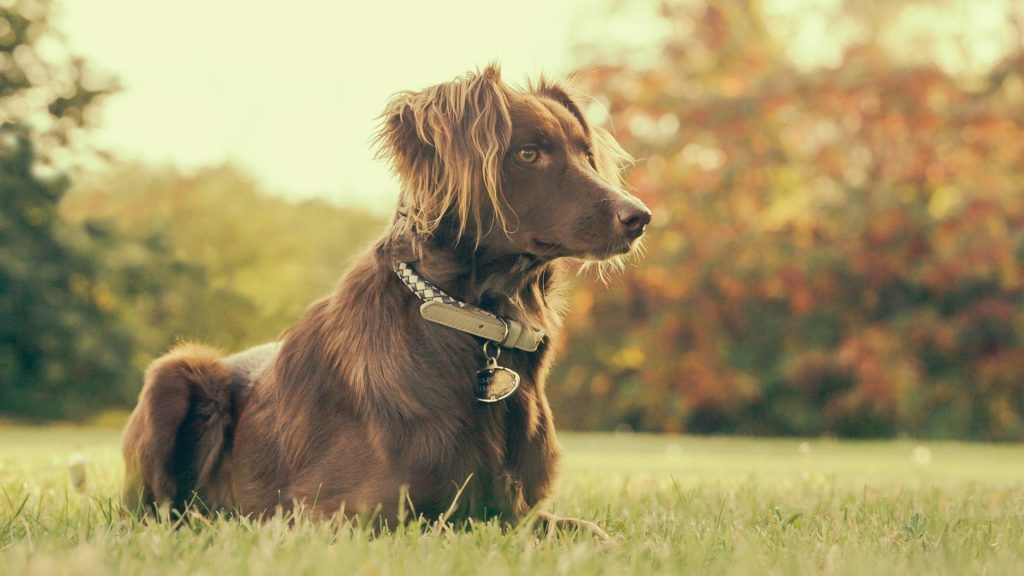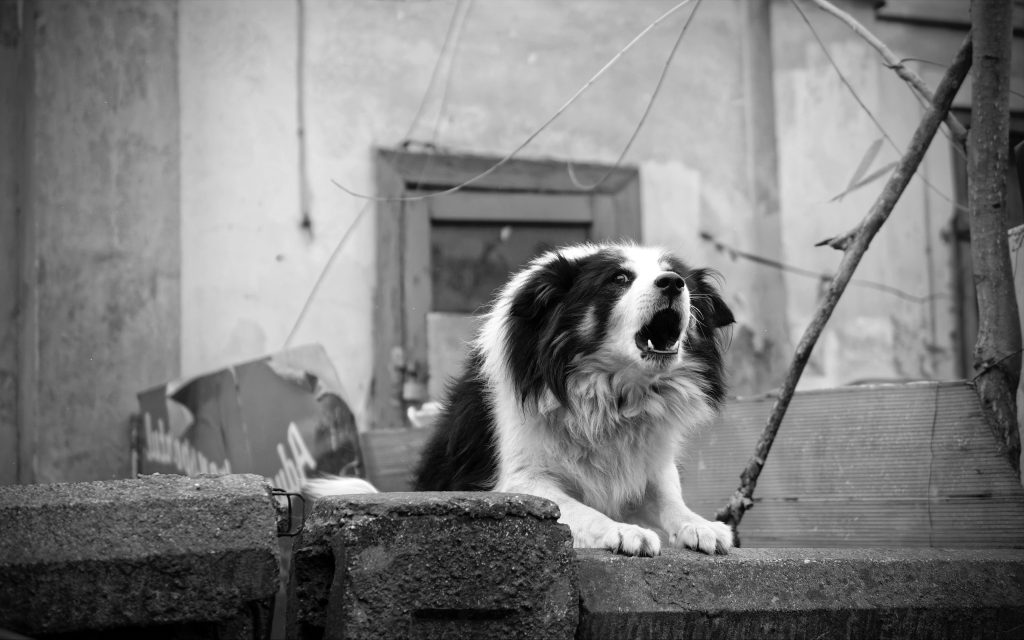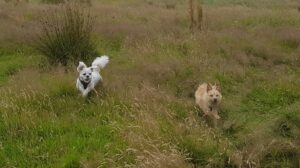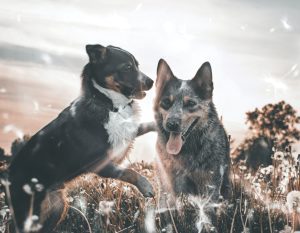Need help with Reactive Dog Behaviour? Join my FREE Facebook support group...
Reactive Behaviour in Dogs
Do you have a reactive dog?
You have a reactive dog if your dog behaves disproportionately, or in an extreme way, towards a particular trigger or situation. This could mean he is also over excited, anxious or aggressive. But whatever the underlying cause, he is likely making a big deal about what appears to be nothing!
Typically, he could be staring or pulling, jumping and lunging, barking and squealing, or spinning in circles. He might also be acting snapping and growling at whatever he is reacting to.

When dogs are stressed they aren’t thinking in straight lines and can easily over react to things. People do this too. The amount of stress we are under can seriously affect how we cope with everyday situations. If the same situation is repeated, it can become a default behaviour, and before you know it you have a reactive dog.
This can also happen when dogs are over excited. In fact, any emotional state can affect the way our dogs rationalise the situations they are in. And because of this, dogs can become reactive to almost anything. Even needing the loo can affect a dog (or persons) sensitivity – check out my dog reactivity experiment to see how it works!
The most common causes of reactive dog behaviour are other dogs, the door bell, and traffic, but I have seen dogs that are reactive to skateboards, people with beards, umbrellas, people with bags, dogs on TV, ice cream signs, people with cameras, shadows, and even sliding shop doors. The list goes on and on, and I know that as soon as I hit publish, I’ll think of even more!
Learn more about Reactive Dog Behaviour here
Handling Reactive Dog Behaviour
Every dog is different, so it would be impossible to talk about specific strategies. But, there are some things that can be done to ease all types of reactive behaviour. Here are a few that you can’t go wrong with…
Create Space
If his reaction is so extreme that there is no chance of him calming down, then you can move further away. Don’t go too far though, he still needs to be aware of the trigger. If your dog is reacting aggressively, then moving away will also reduce the chances of him redirecting his aggression onto you. Keeping everyone safe must take priority over everything else.
Creating space is also a great strategy for preventing reactive behaviour. Experiment and figure out the distance your dog can cope at, then stick with that while he learns to stay calm.
Stop
If creating space isn’t quite doing the job, then just stop what you are doing and wait for him to come back to earth again. This may not be a five minute job, or even a 20 minute job, but it’ll be worth the wait. Once he’s paying attention again, you can continue as if nothing had happened!

Be Quiet
Shouting just adds tension to an already tense situation. Remember the last time you reacted to something you were afraid of, would it have helped if everyone around you had shouted at you to calm down? Or to “sit nice”? For this reason it’s probably not worth using your voice at all. Your dog isn’t listening, so there is little point trying to get him to do anything.
Be Patient
Patience is a big part of managing reactive behaviour, being impatient is likely to reinforce the problem rather than ease it. There is really nothing you can do to speed things up when he is in full reactive mode, so don’t bother trying to calm him, distract him, or give him a cue – even one he knows well. Just wait for him to settle by himself. Once he settles down his brain will switch back on. But, if you are impatient you might accidentally skip this crucial stage.
Leave out the treats
Things will go much more smoothly, for now, if you forget about any kind of reward, or distraction. We’re aiming to balance your dog emotionally, but more often than not, treats and toys just add excitement. This is the opposite of what you are trying to achieve. So, unless you have been shown how to get the timing right, then keep it simple, and leave the toys and treats at home. I have more tips about when to treat, and when not to here.
What’s next?
Now you have a starting place, you will need to start addressing the root cause of the problem behaviour. Whether that be anxiety, over excitement or aggression, you’ll need a training plan. Otherwise, your hard work will be wasted.
I always recommend getting help from a reactive dog specialist. They will be able to properly assess the problem for you and give you good dog behaviour advice from the start. The internet has lots of advice, some good, some not so much. Getting a professional behaviourist who understand reactive behaviour will save you a lot of time and effort. And, when you consider the cost of all the various training aids, harnesses, leads and medications that are available, your behaviourist could also actually save you money.
Check out my Free Facebook Support Group here
How can I help?
Most reactive behaviour can be managed over a series of sessions. As part of your rehabilitation plan we’ll establish all the triggers for the behaviour and an order of severity. We’ll discover his comfort zone and any contributory factors. Then we’ll begin work on your dogs triggers and predictors, related behaviours, reduce overall anxiety, change his expectations, and find his comfort zone, for managed progress. Every dog is different, but typically, it takes around 2-3 face to face sessions or 4-5 zoom sessions.
It’s important to note that the problem will not be “fixed” at this stage. You’ll still have a little work to do to polish everything off and make the changes permanent. I’ll talk you through this at your final session, and support will remain in place for as long as you need it.
Whether you just need a few free tips via blogs and my group, pointed in the right direction with a video and online classes, or full face to face support, click below for all the options!


